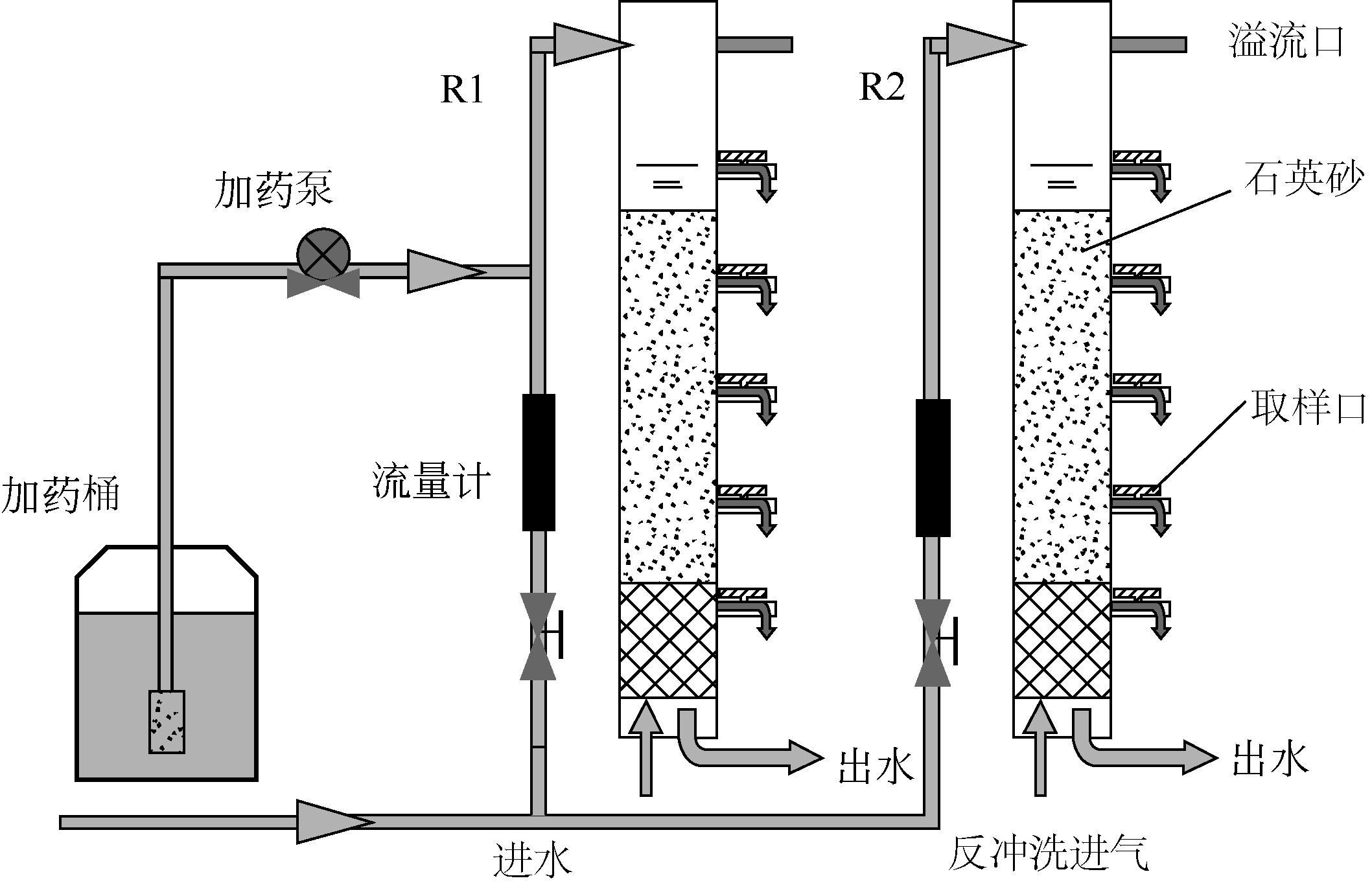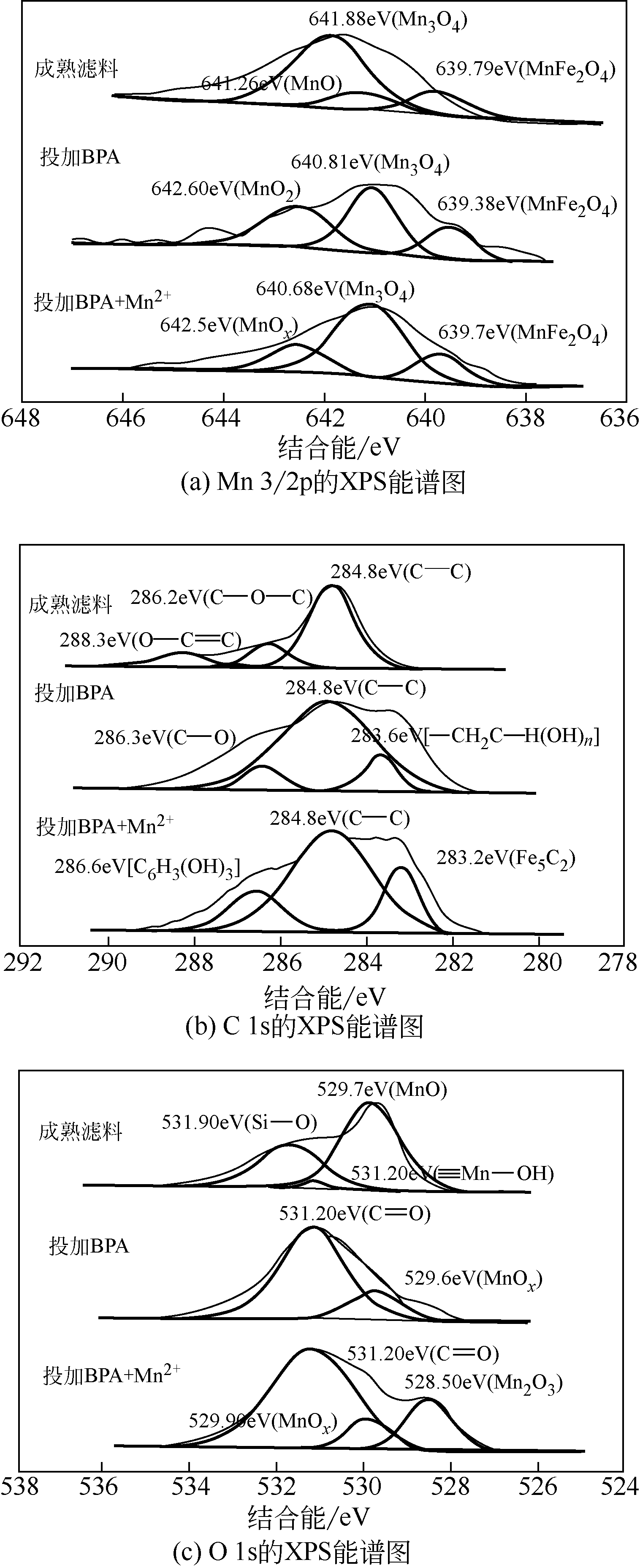| 1 |
程光. 环糊精聚合材料去除水中染料及内分泌干扰物的研究[D]. 上海: 华东理工大学, 2019.
|
|
CHENG G. Study on removal of dyes and endocrine disruptors in water by cyclodextrins polymeric materials[D]. Shanghai: East China University of Science and Technology, 2019.
|
| 2 |
CHEN D, KANNAN K, TAN H, et al. Bisphenol analogues other than BPA: environmental occurrence, human exposure, and toxicity—a review[J]. Environmental Science & Technology, 2016, 50(11): 5438-5453.
|
| 3 |
BIGNARDI C, CAVAZZA A, LAGANA C, et al. UHPLC high resolution mass spectrometry determination of bisphenol A and plastic additives released by polycarbonate tableware: influence of ageing and surface damage[J]. Analytical and Bioanalytical Chemistry, 2015, 407(26): 7917-7924.
|
| 4 |
陈玫宏, 郭敏, 徐怀洲, 等. 太湖表层水体及沉积物中双酚A类似物的分布特征及潜在风险[J]. 环境科学, 2017, 38(7): 2793-2800.
|
|
CHEN M H, GUO M, XU H Z, et al. Distribution characteristics and potential risk of bisphenol analogues in surface water and sediments of Lake Taihu[J]. Environmental Science, 2017, 38(7): 2793-2800.
|
| 5 |
ZHANG L, WANG W Z, SUN S M, et al. Elimination of BPA endocrine disruptor by magnetic BiOBr@SiO2@Fe3O4 photocatalyst[J]. Applied Catalysis B: Environmental, 2014, 148: 164-169.
|
| 6 |
刘畅, 黄雅丹, 张莹, 等. 培养条件下双酚A对稻田土壤微生物群落特征的影响[J]. 环境科学, 2016, 37(11): 4380-4388.
|
|
LIU C, HUANG Y D, ZHANG Y, et al. Effects of bisphenol A on characteristics of paddy soil microbial community under different cultural conditions[J]. Environmental Science, 2016, 37(11): 4380-4388.
|
| 7 |
NOTARDONATO I, RUSSO M V, AVINO P. Phthalates and bisphenol A residues in water samples: an innovative analytical approach[J]. Rendiconti Lincei-Scienze Fisiche E Naturali, 2018, 29(4): 831-840.
|
| 8 |
叶圣杰. 基于纳米材料或适配体的修饰电极检测从食品包装材料迁移的双酚A[D]. 福州: 福建师范大学, 2018.
|
|
YE S J. Detection of bisphenol A from food packaging materials based on nanomaterial or aptamer modified electrode[D]. Fuzhou: Fujian Normal University, 2018.
|
| 9 |
HU L, ZHANG G, WANG Q, et al. Facile synthesis of novel Co3O4-Bi2O3 catalysts and their catalytic activity on bisphenol A by peroxymonosulfate activation[J]. Chemical Engineering Journal, 2017, 326: 1095-1104.
|
| 10 |
张塞, 邹英桐, 陈中山, 等. 可见光驱动RGO/g-C3N4活化过硫酸盐降解水中双酚A[J]. 无机材料学报, 2020, 35(3): 329-336.
|
|
ZHANG S, ZOU Y T, CHEN Z S, et al. Visible-light-driven activation of persulfate by RGO/g-C3N4 composites for degradation of BPA in wastewater[J]. Journal of Inorganic Materials, 2020, 35(3): 329–336.
|
| 11 |
李蒋, 王雁, 张秀芳, 等.Co3O4/BiVO4复合阳极活化过一硫酸盐强化光电催化降解双酚A[J]. 环境科学, 2018, 39(8): 3713-3718.
|
|
LI J, WANG Y, ZHANG X F, et al. Enhancement of photoelectrocatalytic degradation of bisphenol A with peroxymonosulfate activated by a Co3O4/BiVO4 composite photoanode[J]. Environmental Science, 2018, 39(8): 3713-3718.
|
| 12 |
XU L, YANG L, JOHANSSON E M J, et al. Photocatalytic activity and mechanism of bisphenol a removal over TiO2-x/rGO nanocomposite driven by visible light[J]. Chemical Engineering Journal, 2018, 350: 1043-1055.
|
| 13 |
郭婷婷, 杨艳玲, 李星, 等. 膜滤特性对混凝–超滤组合去除双酚A的影响[J]. 水处理技术, 2019, 45(5): 38-41.
|
|
GUO T T, YANG Y L, LI X, et al. Effect of filtration characteristics on bisphenol A removal by coagulation ultrafiltration combination[J]. Technology of Water Treatment, 2019, 45(5): 38-41.
|
| 14 |
LI C, LU Q, YE J, et al. Metabolic and proteomic mechanism of bisphenol A degradation by Bacillus thuringiensis[J]. Science of the Total Environment, 2018, 640/641: 714-725.
|
| 15 |
GUO Y M, HUANG T L, WEN G, et al. The simultaneous removal of ammonium and manganese from groundwater by iron manganese co-oxide filter film: the role of chemical catalytic oxidation for ammonium removal[J]. Chemical Engineering Journal, 2017, 308: 322-329.
|
| 16 |
CHENG Y, HUANG T L, SUN Y K, et al. Catalytic oxidation removal of ammonium from groundwater by manganese oxides filter: performance and mechanisms[J]. Chemical Engineering Journal, 2017, 322: 82-89.
|
| 17 |
国家环境保护总局. 水和废水监测分析方法[M]. 4版. 北京: 中国环境科学出版社, 2002: 370-372.
|
|
SEPA. Analytical methods of water and wastewater[M]. 4th ed. Beijing: China Environmental Science Press, 2002: 370-372.
|
| 18 |
白筱莉, 黄廷林, 张瑞峰, 等. 铁锰复合氧化膜同步去除地表水中氨氮和锰[J]. 中国环境科学, 2017, 37(12): 4534-4540.
|
|
BAI X L, HUANG T L, ZHANG R F, et al. The simultaneous removal of ammonium and manganese from surface water by iron-manganese co-oxides film[J]. China Environmental Science, 2017, 37(12): 4534-4540.
|
| 19 |
AUDI A A, SHERWOOD P M A. Valence-band X-ray photoelectron spectroscopic studies of manganese and its oxides interpreted by cluster and band structure calculations[J]. Surface and Interface Analysis, 2002, 33(3): 274–282.
|
| 20 |
JUNTA J L, HOCHELLA M F. Manganese (Ⅱ) oxidation at mineral surfaces: a microscopic and spectroscopic study[J]. Geochimica et Cosmochimica Acta, 1994, 58(22): 4985-4999.
|
| 21 |
SHCHUKAREV A, KOROLKOV D. XPS study of group ⅠA carbonates[J]. Central European Journal of Chemistry, 2004, 2(2): 347-362.
|
| 22 |
STOYANOV P, AKHTER S, WHITE J M. XPS study of metal/polymer interaction: evaporated aluminum on polyvinyl alcohol polymer[J]. Surface and Interface Analysis, 1990, 15(9): 509-515.
|
| 23 |
STROHMEIER B R, HERCULES D M. Surface spectroscopic characterization of manganese/aluminum oxide catalysts[J]. The Journal of Physical Chemistry, 1984, 88(21): 4922-4929.
|
| 24 |
NOHIRA H, TSAI W, BESLING W, et al. Characterization of ALCVD-Al2O3 and ZrO2 layer using X-ray photoelectron spectroscopy[J]. Journal of Non-Crystalline Solids, 2002, 303(1): 83-87.
|
 ), GUO Yingming(
), GUO Yingming( ), YANG Jing, XU Wei, WANG Xu, ZHANG Ruifeng
), YANG Jing, XU Wei, WANG Xu, ZHANG Ruifeng





